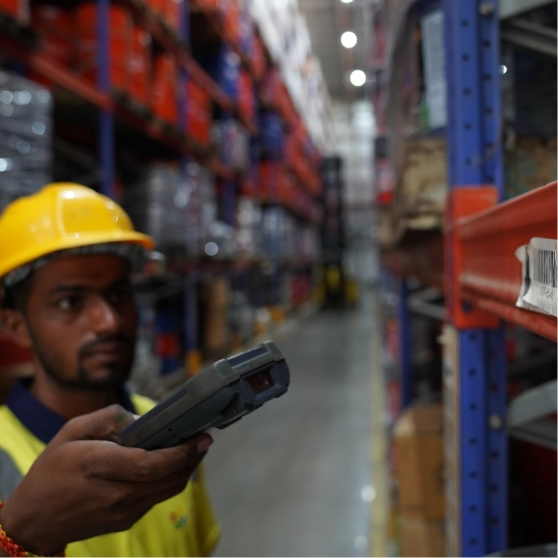Decoding the Indian Warehousing and Contract Logistics Sector’s Expectations from the Union Budget 2023-24

The Indian logistics and supply chain sector has emerged as a significant backbone for the Indian economy in the post-COVID era and continues to play a crucial role toward strengthening India’s position as a global economic power. A powerful and cost-effective logistics and warehousing market has emerged as a critical feature in modern global business and economic environment, and this is currently one of the major areas of focus for the Indian government, as evidenced by its recently launched National Logistic policy, which will be incorporated on a large scale in 2023.While lowering logistics costs by building effective infrastructure is also a prime objective, the goals cannot be met without a comprehensive approach to the improvement of the complete supply chain, including warehouses. And one such vital trade supply chain segment is India’s warehousing and contract logistics!
The Indian warehousing market was worth INR 1,206.03 billion in 2021 and is projected to increase to INR 2,872.10 billion by 2027, growing at a CAGR of 15.64% between 2022 and 2027. In line with national policies such as ‘Make in India’ and ‘Digital India,’ the warehousing sector is looking to advance digital adoption, adopt greener strategies that meet international standards, and push value-added collaborations with the industrial sector.While geopolitical stressors have posed additional threats to international commerce, India’s logistics and warehousing sector has emerged stronger and holds a lot of potential.
As the Indian government focuses more on infrastructure development and boosting Indian exports through different programmes, the sector faces a number of challenges that, if addressed in the upcoming union budget, will aid in the sector’s long-term progress and holistic development. These are as follows:
- Steel price reduction: Steel accounts for 30%-40% of warehouse construction costs, and since 2021, these prices have skyrocketed due to a global shortage, leading to an increase in procurement. While many factors contributed to the price increase during and after the pandemic, it has had an impact on the warehouse automation market, specially for fixed infrastructure solutions, where steel can account for up to 83% of the total price. Steel prices are a major impediment to the Indian warehousing sector, ranging from raising the expense of digital adoption through automation to extending the lead time of construction. If the upcoming Union budget considers lowering steel duty/price for industrial warehouse construction, it’ll be a huge boost to development.
- Better Transportation Infrastructure: As part of the National Logistic Policy, the ambitious Gati Shakti plan intends to build an ecosystem that connects roads and railways from the hinterlands to coastal India’s ports. By 2025, the plan calls for the construction of approximately 2 lakh kilometers of national highways and nearly 6,000 kilometers of 4-6 lane national highways in coastal regions, as well as the development of 2-4 lane national highways that connect different state capitals. This is critical for the sector because roads currently transport 64% of Indian freight.While the policy proposes a 100-lakh-crore outlay for road projects, prompt and efficient deployment would be critical to the sector’s growth. It is also worth noting that, in addition to the proposed initiatives of constructing dedicated logistic parks closer to ports, an improved road network will help decongest existing warehousing hubs, decrease rentals, and unlock better value for land available for warehousing.
- Capital subsidies and public-private partnerships for multimodal logistics parks: Multi-modal logistic parks have also been a key focus of the GoI’s National Logistic policy, with the government announcing a USD 31.63 billion investment in 2021 for the planning and development of the logistic parks through a public-private partnership (PPP) model.In line with this, additional capital subsidies for the development of grade-A warehouses in smaller towns, as well as support for Public-Private Partnerships for logistic parks with improved accessibility to new motorways, would help achieve the goal of lowering freight costs across the country, which are currently very high at 13%-14% of GDP, compared to other developed global economies, which are 7%-8% of GDP. In the 2023 budget, a focus on easier access to investment for industrial warehousing, including simplified FDI processes, would be appealing.
- Green warehousing subsidies: Because the transportation and logistics sector has been a major contributor to environmental pollution, there is an urgent need to address this at the public policy, business, and individual levels.Government intervention in ensuring reasonable pricing, incentivizing/subsidizing green efforts, and establishing and implementing laws has become critical. Reduced solar panel import duties to effectively minimize capex investments, as well as a re-examination of the tax structure and subsidies for environmentally conscious practises, are among the aspects that, if considered in the upcoming Union Budget, will benefit the logistics and warehousing sector in not only reducing its carbon footprint, but also aligning with international business standards and winning larger global mandates.
- Subsidies for technology adoption: While automation has been a buzzword since COVID, and the emergence of intelligent warehousing is now a necessity, digitisation continues to require significant investment.Easier and more appealing loans/access to funds for tech adoption and the establishment of smart warehouses, particularly in the cold storage and specialty warehousing segments, would go a long way toward advancing the adoption of tech-enabled solutions on a larger scale, thereby improving the efficiency and operational seamlessness of the entire supply chain.
In line with the government’s vision of ‘Atmanirbhar Bharat’ and becoming a 5 trillion dollar economy by 2025, the above inclusions, and the goal to lower the overall logistic costs and improve efficacies, the above-mentioned pre-budget expectations from the sector would go a long way, if taken into account, in creating a strong and trustworthy infrastructure for foreign and domestic trade.
